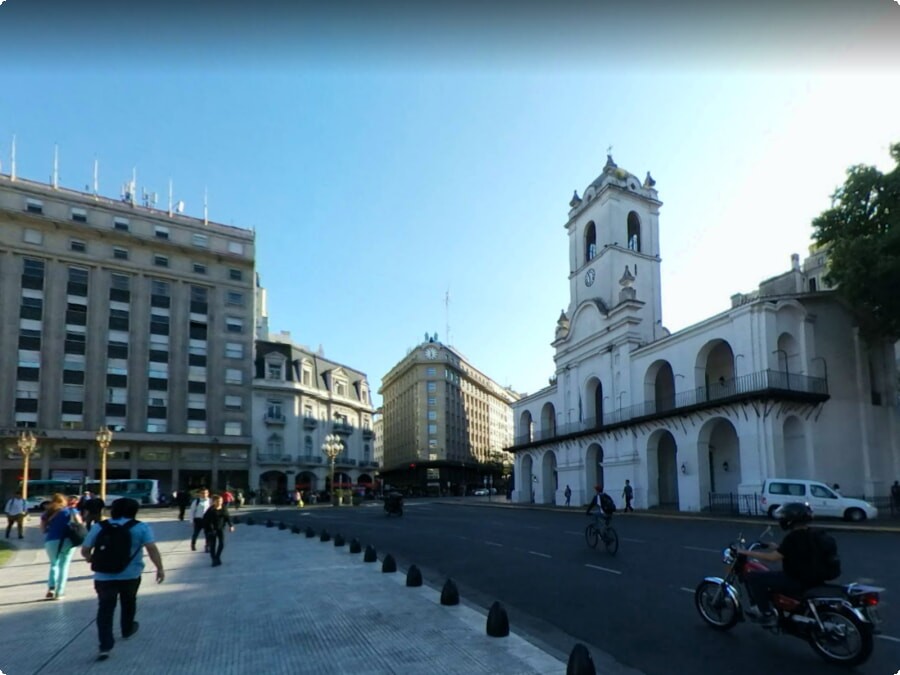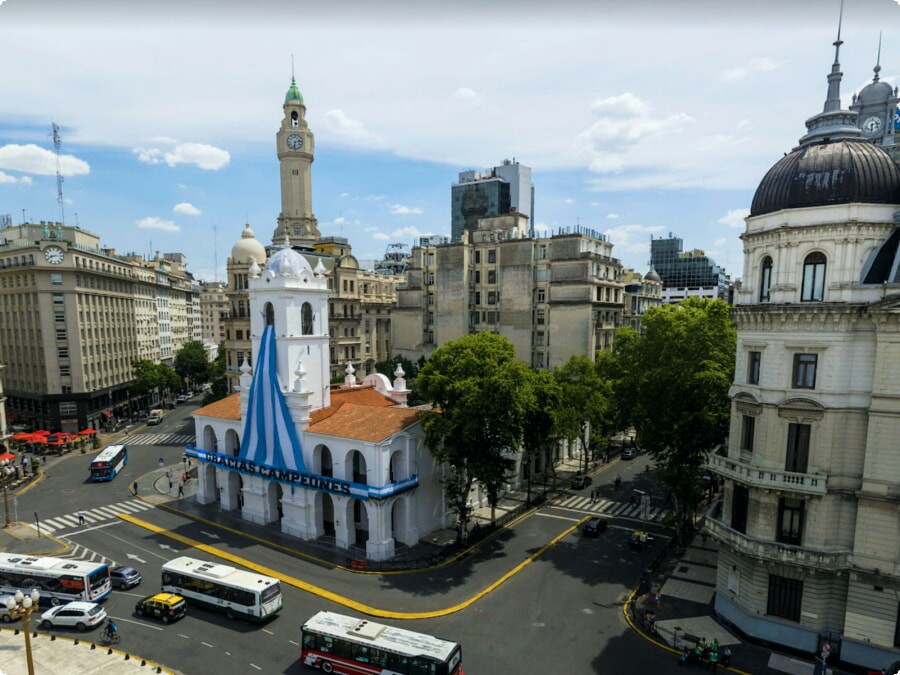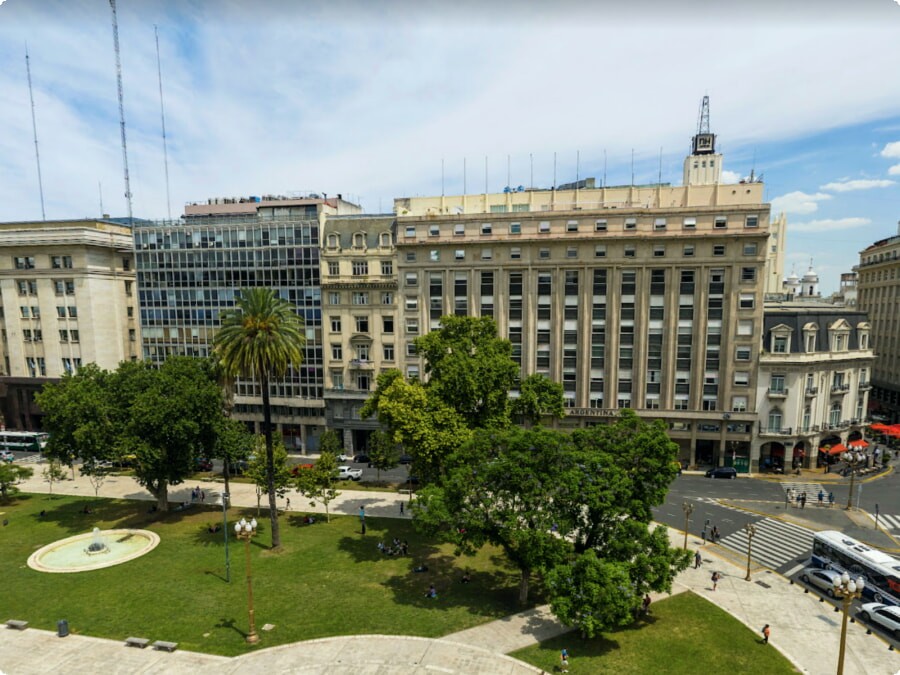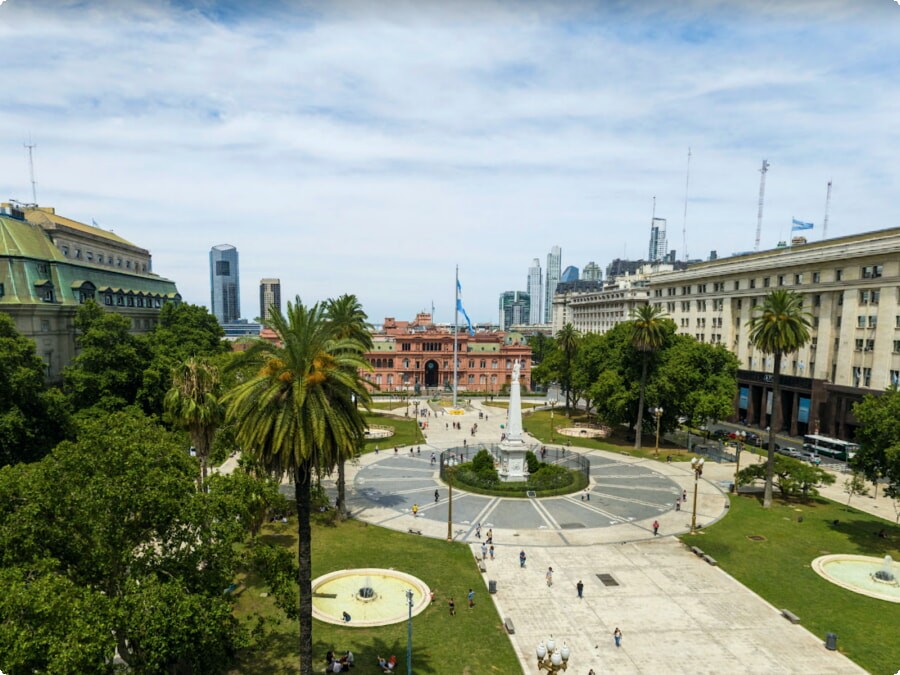Top 5 Places to See in Argentina
Tango, empanadas, glaciers and wine, Argentina’s enticing mix of energetic cities and passionate culture make it a must-see destination. Whether you want to linger in Buenos Aires, stroll the paved European streets of Cordoba or visit Mendoza deep in the country’s wine region.
A trip to the south is also a must, particularly to Ushuaia – the world’s southernmost city and home of Tierra Del Fuego National Park. This area is also famous for its mindblowing desert landscapes like the UNESCO-listed 14 Colour Mountain.
Buenos Aires
Buenos Aires’ faded grandeur and lively street life make it one of the most interesting cities in Argentina. Whether you’re exploring the shady plazas of Recoleta, the cobbled streets of San Telmo, or the flamboyant murals of La Boca, there is always something new to see. The Argentine capital is also home to some of the country’s most important historical sites. Visit the Centro Cultural Kirchner to learn about the political history of Argentina, or head to the Museum of National Arms in the old Paz building to get a glimpse of a former era’s gilded splendor.
If you’re a wine lover, the Mendoza region is a must-visit. Many of the local vineyards offer eateries and accommodation, so you can spend several days sampling the region’s delicious wines. One of the most popular natural attractions in the area is the Hill of Seven Colors, located in Purmamarca. This UNESCO World Heritage Site features a palette of colors that changes in hue at different times of the day.
The Iguazu Falls are one of the most stunning places to visit in Argentina. This awe-inspiring natural wonder is situated right against the border with Brazil and is comprised of over 250 cascades. Get up close to the gushing water by taking a hike or boat tour, but be sure to bring an umbrella as the rainy season in Iguazu brings intense rainfall and strong winds.
Another natural highlight is the Ibera Wetlands in Corrientes Province, where you can see a variety of wildlife ranging from adorable capybaras and otters to spine-tingling anacondas and alligators. The wetlands are comprised of swamps, lakes, and bogs that create one of the most significant and best-preserved natural ecosystems in the world. It is possible to explore the wetlands on foot, but it’s highly recommended that you take a boat tour to see the flora and fauna from an up-close perspective. It’s also a great place for birdwatching, with more than 350 different species living in the park. The wetlands can be visited year-round, but the best time to go is during the drier months of March – April and August – September.
It is impossible to get acquainted with the sights of Argentina in one day, as well as in a week, but you can see the maximum number of new places with the help of a rented car at one of the country's airports. For example, in Buenos Aires you can rent a car from 17 euros per day, in Ezeiza Airport - from 18 euros per day.

Valdes Peninsula
Taking you to some of Argentina's most awe-inspiring landscapes, the Valdes Peninsula offers a dramatic contrast to the rest of this South American country. Here you'll see pristine glaciers, rugged mountains and stunning desert.
The region is also home to a wealth of animal species, including guanacos, lesser rheas and Patagonian foxes, while the coastline of Punta Tombo has been designated as one of the world's best places to observe sea lions.
Aside from its jaw-dropping natural beauty, the Valdes Peninsula is renowned for its wine production, so be sure to take some time out to visit some of the region's many vineyards. The region's most famous winery is Bariloche, a picturesque lakeside town that's home to some of the nation's most celebrated wines.
The nearby San Carlos de Bariloche National Park is a UNESCO World Heritage Site where you'll find some of the most spectacular mountain scenery in all of Argentina. Here you can hike and kayak along icy blue lakes that erupt from the mountains and are surrounded by snow-capped peaks.
To really get a sense of the natural wonders in this area, you should take the opportunity to visit some of the region's wetlands. The Ibera Wetlands straddle the border between Salta and Jujuy, and it's an incredibly unique destination where you can see all sorts of wildlife from adorable capybaras to spine-tingling anacondas.
Another great way to see this part of Argentina is on board the Tren del Fin del Mundo, a train that travels into Tierra Del Fuego following the route of an old convict trail. This is a truly unforgettable experience and one of the best things to do in Argentina.
If you want to make the most of your time in the Valdes Peninsula, we recommend staying at an estancia that offers sensational views and a totally in-the-middle-of-nowhere experience. We can suggest some of the most special options, including the upscale Faro Punta Delgada in Puerto Madryn and the rustic but luxurious Estancia Las Lomas.

Humahuaca
The desert valley of Quebrada de Humahuaca is a geological wonder, but its landscape also preserves evidence of human activity from 10,000 years ago. It tells the story of Argentina’s people—from hunter-gather tribes and pre-Hispanic communities to the Spanish colonizers and their fight for independence, which is still echoed in its towns like Humahuaca.
The town itself is a great base for exploring the area’s many natural and cultural attractions, with its cobbled streets, whitewashed church, and cabildo (museum) housing archaeological artifacts. The main square is home to a unique clock tower and a craft fair where you can buy local goods such as llama wool blankets and Andean accessories. You’ll also find great cafes and restaurants that serve regional fare such as empanadas, locro, humitas, and charqui.
In the neighboring town of Tilcara, you can trek to a soaring rock formation called El Garganta de los Diablos or visit the famous Rainbow Mountain (Mountain of 14 Colors). This is just one of several dazzling geographical formations along Ruta 9, and Humahuaca offers the perfect jumping off point to visit them all.
Another must-see site is the bronze statues of armed resistance soldiers at Cerro Catedral, which commemorates those who died fighting for independence in this remote part of northern Argentina. You can reach the monument by climbing the stairs to the top, which offer stunning views of the surrounding landscapes.
Football—or futbol—is an integral part of Argentine culture, and watching a live game is a must-do for any visitor to the country. A trip to Buenos Aires, where you can see River Plate or Boca Juniors, is an excellent opportunity to enjoy the game with a local crowd.
Those looking for a more relaxed excursion should head to Ibera Wetlands, an enormous natural reserve that’s home to a wide array of wildlife, from adorable capybaras and otters to spine-tingling anacondas and alligators. You can take kayaks or boats out on the wetlands, or just wander the trails for a closer look at this incredible ecosystem. There’s even a birding observatory, where you can try to spot some of the 250 species that call the park home.

Aconcagua
The giant peak of Aconcagua is a defining feature of the landscape in Mendoza, Argentina. Visitors here can climb this famous peak — nicknamed “The Giant of the Americas” because of its height — or take in the views from various viewpoints around the park. Aside from hiking, the area is popular for mountain biking and skiing, with a circuit known as Laguna de Horcones connecting Villa La Angostura and San Martin de los Andes.
A day trip to a scenic lake in the mountains is another great option for those looking for an easy way to take in the region’s beauty. Lake Nahuel Huapi is located near Bariloche, the premier ski destination in winter and a great place to enjoy aprés-ski activities like sailing or kayaking. For a more challenging hike, consider the Cerro Catedral trail.
Another UNESCO World Heritage Site in the region, the Quebrada de Humahuaca is an amazing corner of Argentina. Here, high Andean mountains meet desert planes, and small adobe villages are nestled between mountains of polychrome colors. The landscape is home to South America’s two most iconic camelids, the elusive guanaco and its diminutive cousin, the vicuna.

One of the most popular things to do in Argentina is visiting its wine country, which is also a hub for outdoor adventure. Mendoza is the beating heart of Argentina’s wine industry, and many of its surrounding vineyards offer tours, tastings, and accommodation.
Buenos Aires, the capital of Argentina, is a cosmopolitan city with a strong Spanish colonial influence. The streets are filled with faded grandeur and the locals have a fun-loving spirit, often seen in their love of rally car racing, Fernet and coke, and the local cuarteto music.
The northern part of the country is less populated, but no less beautiful. Torres del Paine National Park is a hiking mecca, with trails that lead to the iconic Fitz Roy mountain range. And a visit to the UNESCO-listed Marble Caves in Ischigualasto is an out-of-this-world experience. Located in the lake straddling the border between Argentina and Chile, these caves were formed over thousands of years by water erosion, resulting in cathedral-like arcs.